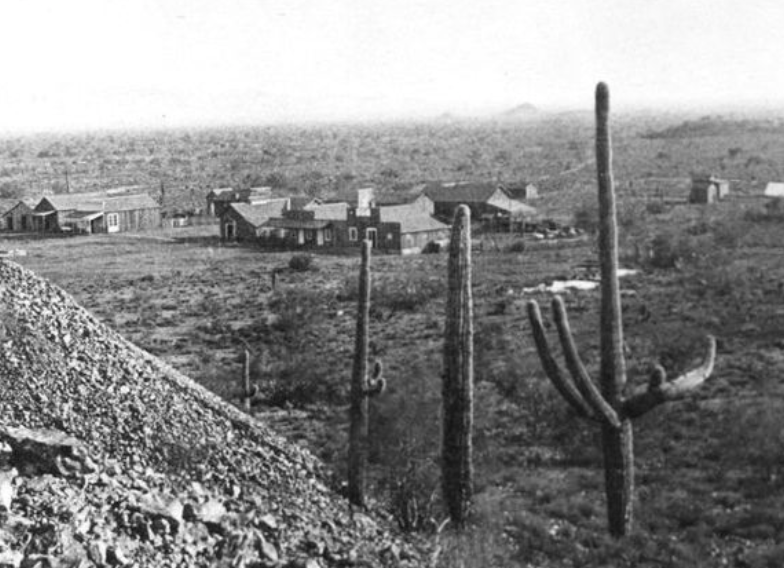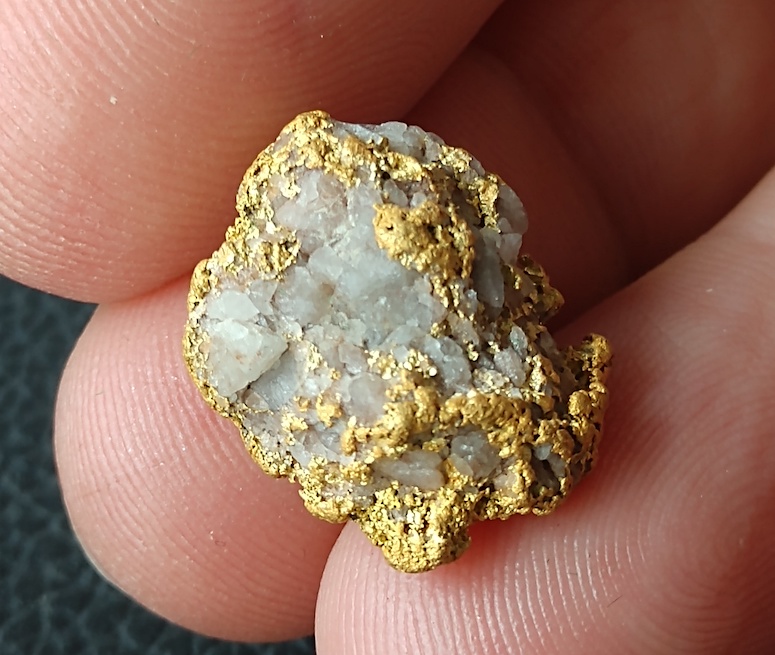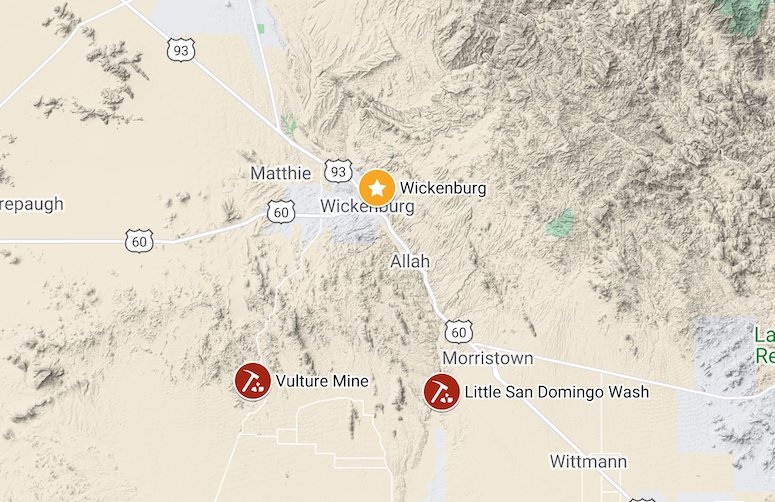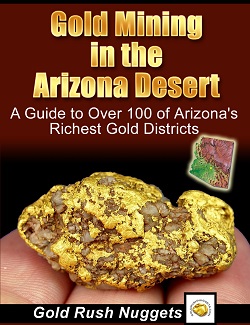
The mining town of Wickenburg has a fascinating history of difficult times, trials and tribulations. Stories of adventurous men, Native American attacks, gold thefts and lost gold treasures. And of course the rich Vulture Mine in the nearby desert that started it all.
Wickenburg has weathered countless Indian raids, the boom-and-bust of mining, harsh droughts and flash flooding. Despite all the hardships it continued growing and prospering. Northwest of Phoenix, the city has some of the richest gold mines in Arizona history.
Even today there are prospectors who explore the desert around Wickenburg in search of hidden gold. The sandy washes hide rich gold deposits that were missed by the old-timers.
Although mining in Wickenburg has largely ground to a halt, there are still many small gold prospectors who find gold by digging for gold around town. There is still quite a bit of placer gold in the desert throughout Maricopa County. The major gold strikes have probably all been found, but there are still small deposits that were overlooked by the early miners. Now men using metal detectors scan the desert floor and recover gold nuggets.

The Vulture Mine
The 1862 gold rush in Yuma, Arizona, piqued the interest of gold prospectors to the desert of Arizona. The 1862 gold discovery on the Colorado River near what is now Yuma inspired die-hard prospectors and miners from California and Mexico to look for minerals in central Arizona. IN 1862, Henry Wickenburg traveled to Arizona with several other men in search of gold.
Maricopa County has a great number of gold mines that have produced a lot of gold over the years. One of the most important was the Vulture Mine. Over the span of 1863 to 1942, gold worth over $200 million has been extracted.
The Vulture Gold Mine was founded after Henry Wickenburg, a prospector from California, arrived and discovered gold ores. The existence of Wickenburg can be credited to this discovery. Even the growth of Phoenix was affected by the Vulture Mine.
Wickenburg hosts an annual gold rush festival for visitors every weekend in February. It is the perfect way to learn about mining history of the region. There was a time when the mine was Arizona’s most productive gold mine.
A Rich Mining Region
The names of die-hard prospectors and miners from California and Mexico adorn many of the geographic landmarks in this part of the state, including the Weaver Mountain and Peeple Valley. In the foothills around Wickenburg there are relics of other mines as homage to the early prospectors in the region.
Legend has it that on the day Henry Wickenburg discovered a rich gold treasure trove in 1863, several large scavengers circling the area which inspired the name of the mine.
The Phoenix Valley became an important agricultural center that helped feed the miners and meet their needs, boosting the region’s development. Now a city of millions of people, much of its growth can be credited to the richness of the Vulture Mine and the surrounding gold mines in the region.
Little San Domingo Wash
The area was reported of extensive activity in the 1870s and 1880s. Active mines were Little San Domingo, Morning Star, White Cloud, Sunset Picacho, Climax, Midnight Owl and Independence at the time, all of which are still in car wash.
In 1875, Old Women Gulch, a southern tributary of the San Domingo Wash, was the largest producer. The dry gulches in the area provided much of the placer production in Maricopa County.

Finding Gold
Gold tends to work its way through the rock and accumulates in crevices, depressions and potholes in the bedrock below the sand and loose rocks.
Today this area is still heavily claimed. The hard rock mines are less active, but there are still considerable opportunities for placer miners. With limited water, most gold is recovered by drywashing, a method that uses air and vibration to separate out gold from dirt and gravel.
Swinging a good metal detector up the countless washes in the desert will turn up some gold even today. In the early day, miners reported picking up large nuggets right on the surface of the desert. It’s not quite that easy nowadays, but there are still some nuggets that we’re missed.
The challenge with metal detecting is having to deal with the countless bits of iron, lead and various trash targets that litter the desert. Only a small percentage of the “beeps” that your detector make will be gold. Be prepared to dig a lot of holes.
Gold Mining in Arizona’s Sonoran Desert
Gold Basin Mining District | Mojave County, AZ

